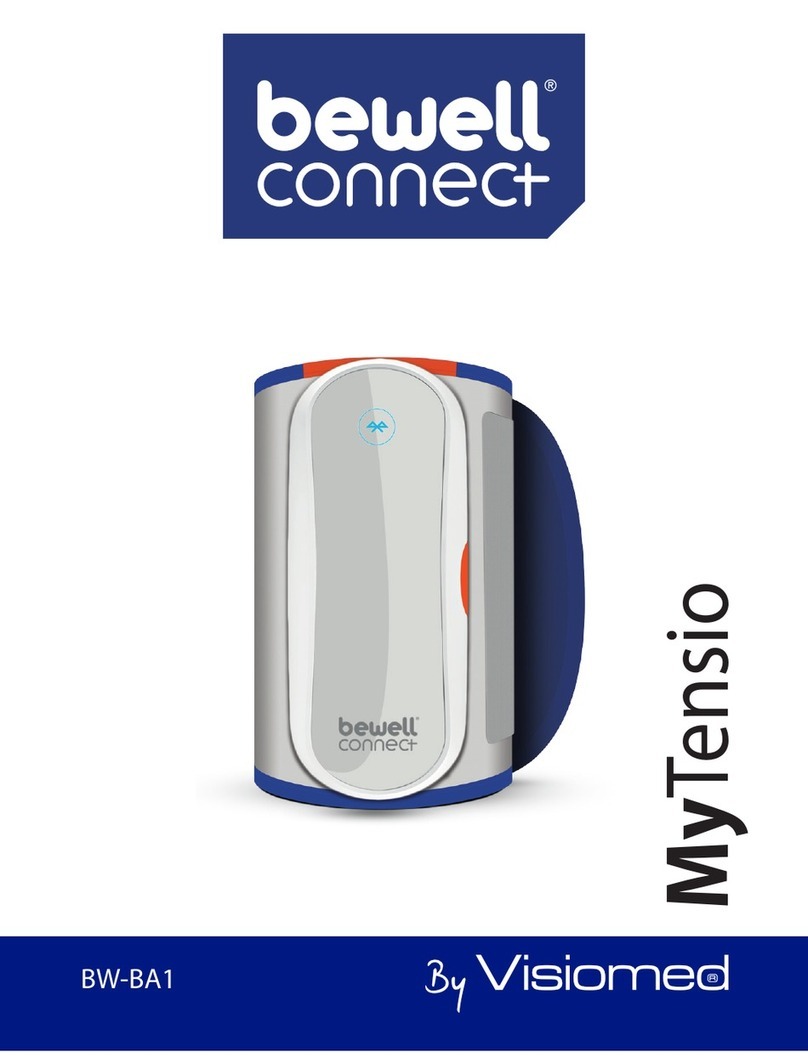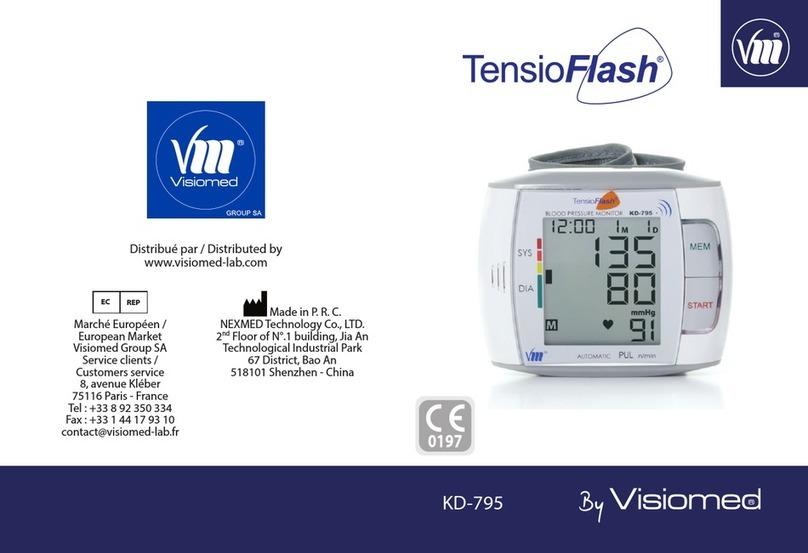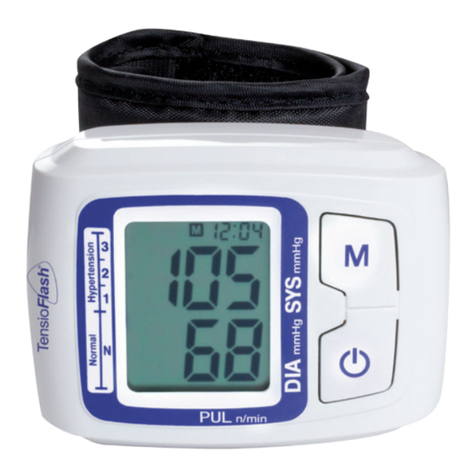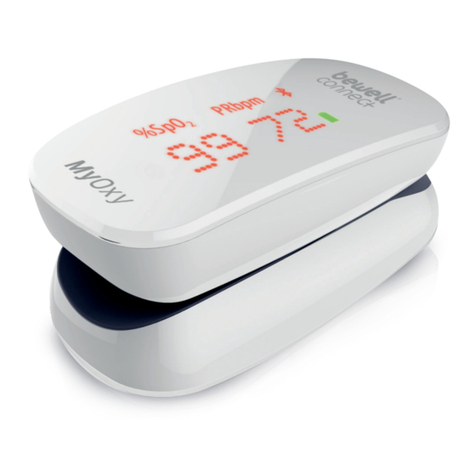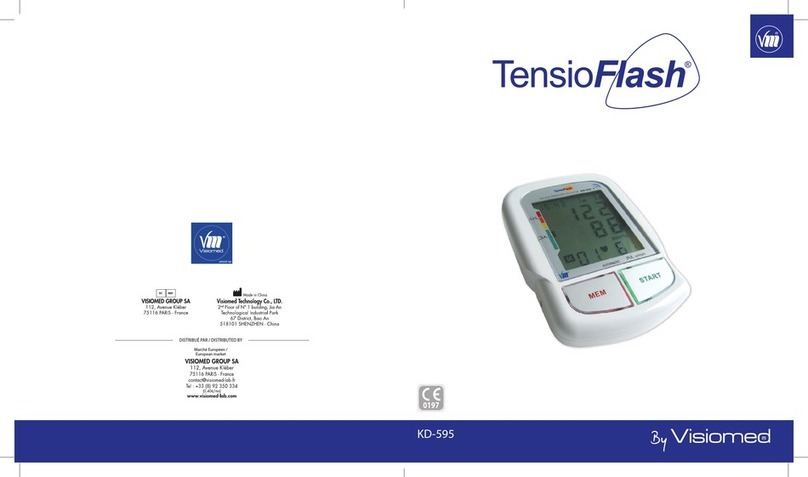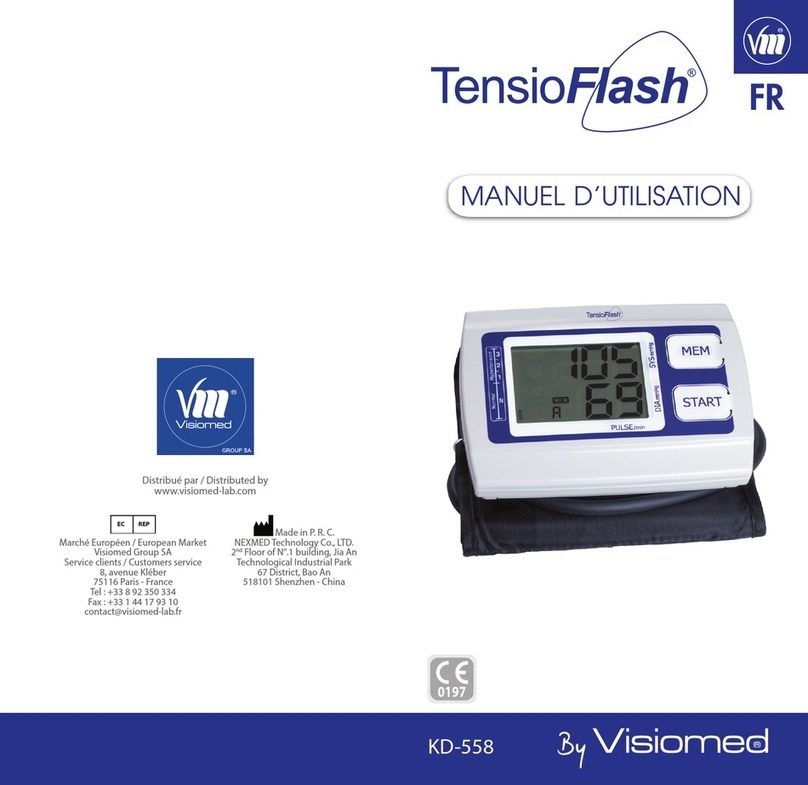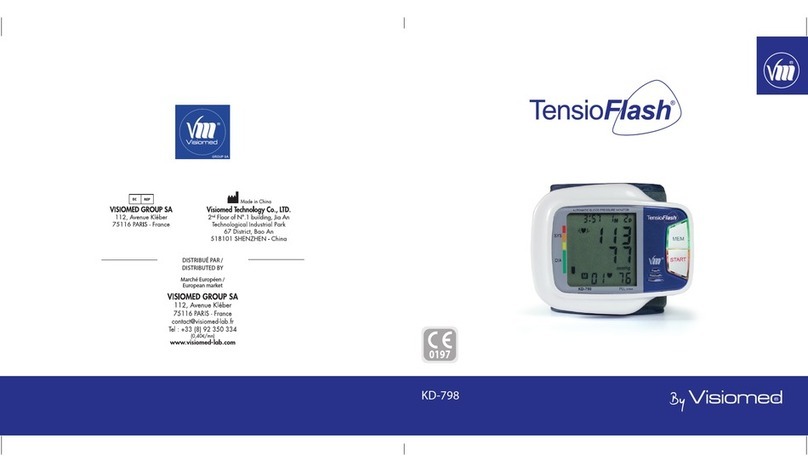
1110 Visiomed - KD-595 - 032016
SUGGESTIONS AVANT MESURE
1. Evitez de manger, fumer, faire de l’exercice 30 minutes avant
toute prise de mesure. Restez calme durant les 15 minutes pré-
cédent la prise de tension.
2. Le stress fait monter votre tension artérielle. Evitez la prise de
mesure en période de stress.
3. Il est préférable de prendre sa tension artérielle au bras gauche.
4. La prise de tension doit être eectuée dans un endroit calme,
vous devez être détendu et assis, le bras posé sur une table.
5. Restez immobile et ne parlez pas durant la prise de tension.
6. Notez sur le tableau de relevé de tension artérielle fourni, vos
résultats de pression sanguine et rythme de vos pulsations
an de les présenter à votre médecin. Une unique prise de
tension ne peut fournir une indication précise de votre réelle
pression sanguine. Vous devez veiller à prendre votre tension
artérielle de façon constante, au même moment de la journée.
Les mesures de pression sanguine varient constamment.
7. Attendez 5 à 10 minutes entre deux prises de tension succes-
sives. L’attente permet aux vaisseaux gorgés de sang de reve-
nir à la normale. Ce délai est fonction de votre propre condi-
tion physique.
UTILISATION DE LA BRASSIÈRE
1. Passez l’extrémité de la brassière dans
l’étrier métallique (scratch en velcro à
l’extérieur).
2. Faire pivoter la brassière autour du bras
an que le tube à air soit vers la paume
de la main.
3. Enler la brassière sur le bras comme
illustré ; assurez-vous qu’elle repose à
2-3cm du coude, tube à air vers l’inté-
rieur du bras. Assurez vous que la borne
de prise de mesure (au niveau du tube à
air – longue de 3cm environ) repose sur
l’artère interne du bras.
4. Serrez l’extrémité libre de la brassière et
refermez la avec le scratch.
5.
Ajustez la brassière sans trop serrer, de fa-
çon à ce qu’il n’y ait pas d’espace entre le
bras et la brassière. Cela pourrait fausser
les résultats. Ne pas prendre les mesures
par-dessus les vêtements.
6. Fixer la brassière avec le scratch de fa-
çon à la porter confortablement. Posez
le bras sur la table (paume en l’air), de
façon à ce que la brassière soit au niveau
du cœur.
7. Assurez-vous que le tube ne soit pas plié,
ni enroulé sur lui-même.
8. Restez assis calmement pendant deux
minutes avant la prise de tension.
Note:
Eectuez les mesures toujours au même bras
(normalement à gauche) pour une meilleure interprétation des
résultats. S’il ne vous est pas possible d’enler la brassière sur le bras
gauche, vous pouvez utiliser votre bras droit.
MESURE DE LA TENSION ARTÉRIELLE
1. Fixer la brassière comme expliqué au chapitre précédent.
2. Appuyez sur la touche START. Toutes les
icônes s’achent durant deux secondes
à l’écran. La prise de tension précédente
s’achera à l’écran. Les explications sont
données dans la langue sélectionnée.
3. L’écran ache 0mmgH lorsque l’appareil
est prêt à prendre la mesure. La brassière
se gone automatiquement. Lorsque
l’écran ache la valeur maximale (jusqu’à
150-200 mmHg), la pression se relâche,
les battements de cœur sont captés, l’in-
dicateur HEART s’ache à l’écran. L’air est
automatiquement évacué de la brassière.
4. Une fois la mesure prise, l’écran ache les valeurs systolique,
diastolique et les pulsations/minute. Les résultats sont auto-
matiquement lus et commenté (indication de la classication
du niveau de tension – standard international WHO).
Les données sont mémorisées.
5. Appuyez de nouveau sur START pour éteindre l’unité. En cas
d’oubli, l’unité s’arrête automatiquement après environ 1 minute.
Note:
- La valeur mesurée sera trop faible si la brassière est maintenue au-
dessus du niveau du cœur, et trop élevée si elle est maintenue au-
dessous du niveau du coeur.
- L’appareil mémorise les 60 dernières prises de tension. Au-delà de
60 mesures, les données les plus anciennes seront eacées.
Visiomed - KD-595 - 032016
